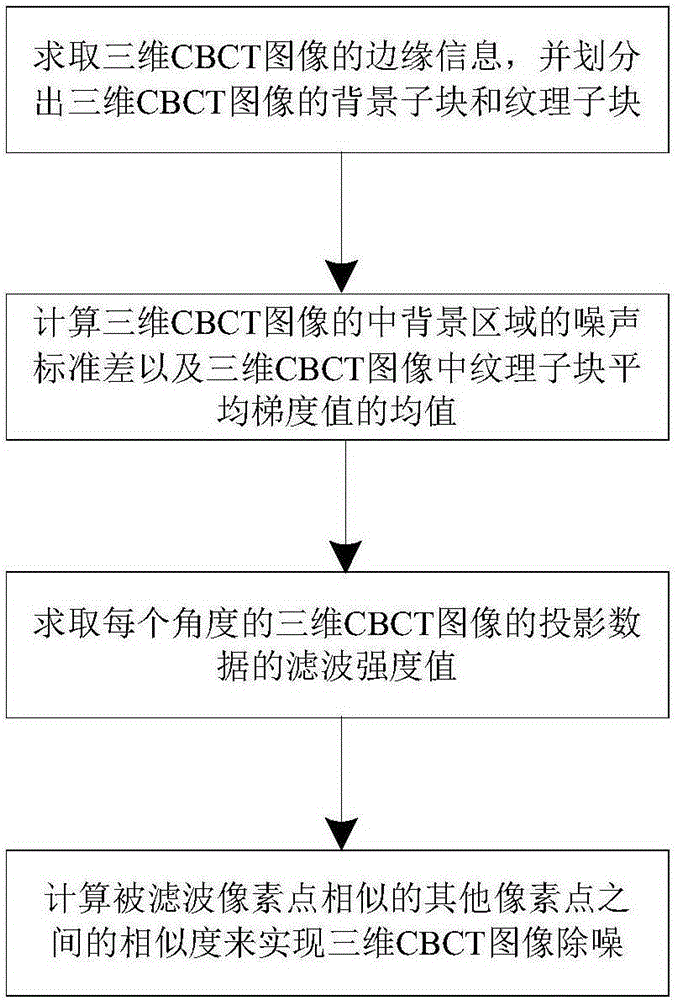Three-dimensional CBCT (cone-beam computed tomography) image denoising method on the basis of improved nonlocal means
A non-local mean, three-dimensional technology, applied in the field of image processing, can solve problems such as few scholars
- Summary
- Abstract
- Description
- Claims
- Application Information
AI Technical Summary
Problems solved by technology
Method used
Image
Examples
Embodiment Construction
[0043] The present invention will be described below with reference to the drawings and specific embodiments of the specification:
[0044] Such as figure 1 As shown, the three-dimensional CBCT image denoising method based on improved non-local mean of the present invention includes:
[0045] Step (1): Obtain the projection data of 3D CBCT images from different angles. The projection data of 3D CBCT images at each angle corresponds to the projection data of a set of 3D CBCT images. Obtain the edge information of the 3D CBCT image and classify the 3D CBCT. Image background sub-block and texture sub-block;
[0046] Step (2): Calculate the noise standard deviation of the background area of the three-dimensional CBCT image and the mean value of the average gradient value of the texture sub-blocks in the three-dimensional CBCT image respectively;
[0047] Step (3): According to the edge information of the three-dimensional CBCT image, the noise standard deviation of the background area...
PUM
 Login to View More
Login to View More Abstract
Description
Claims
Application Information
 Login to View More
Login to View More - R&D Engineer
- R&D Manager
- IP Professional
- Industry Leading Data Capabilities
- Powerful AI technology
- Patent DNA Extraction
Browse by: Latest US Patents, China's latest patents, Technical Efficacy Thesaurus, Application Domain, Technology Topic, Popular Technical Reports.
© 2024 PatSnap. All rights reserved.Legal|Privacy policy|Modern Slavery Act Transparency Statement|Sitemap|About US| Contact US: help@patsnap.com










